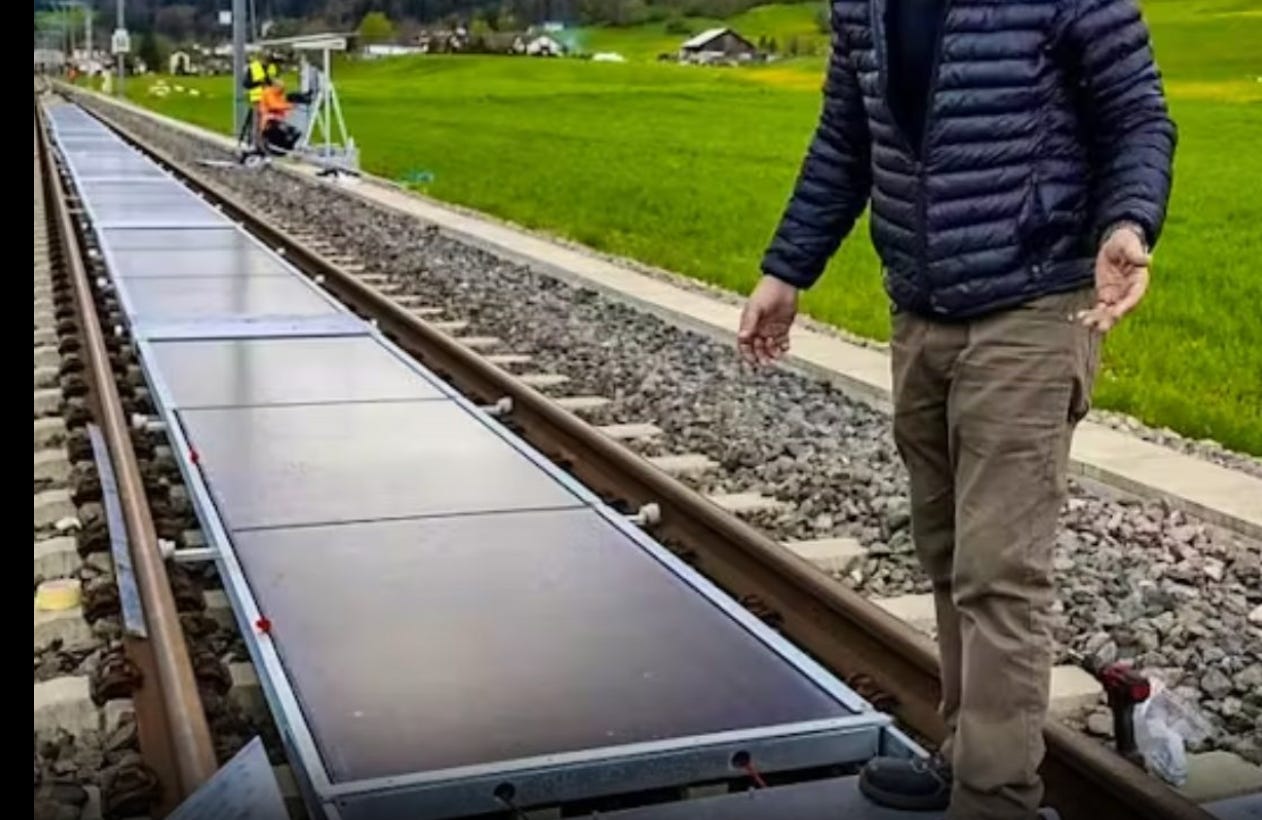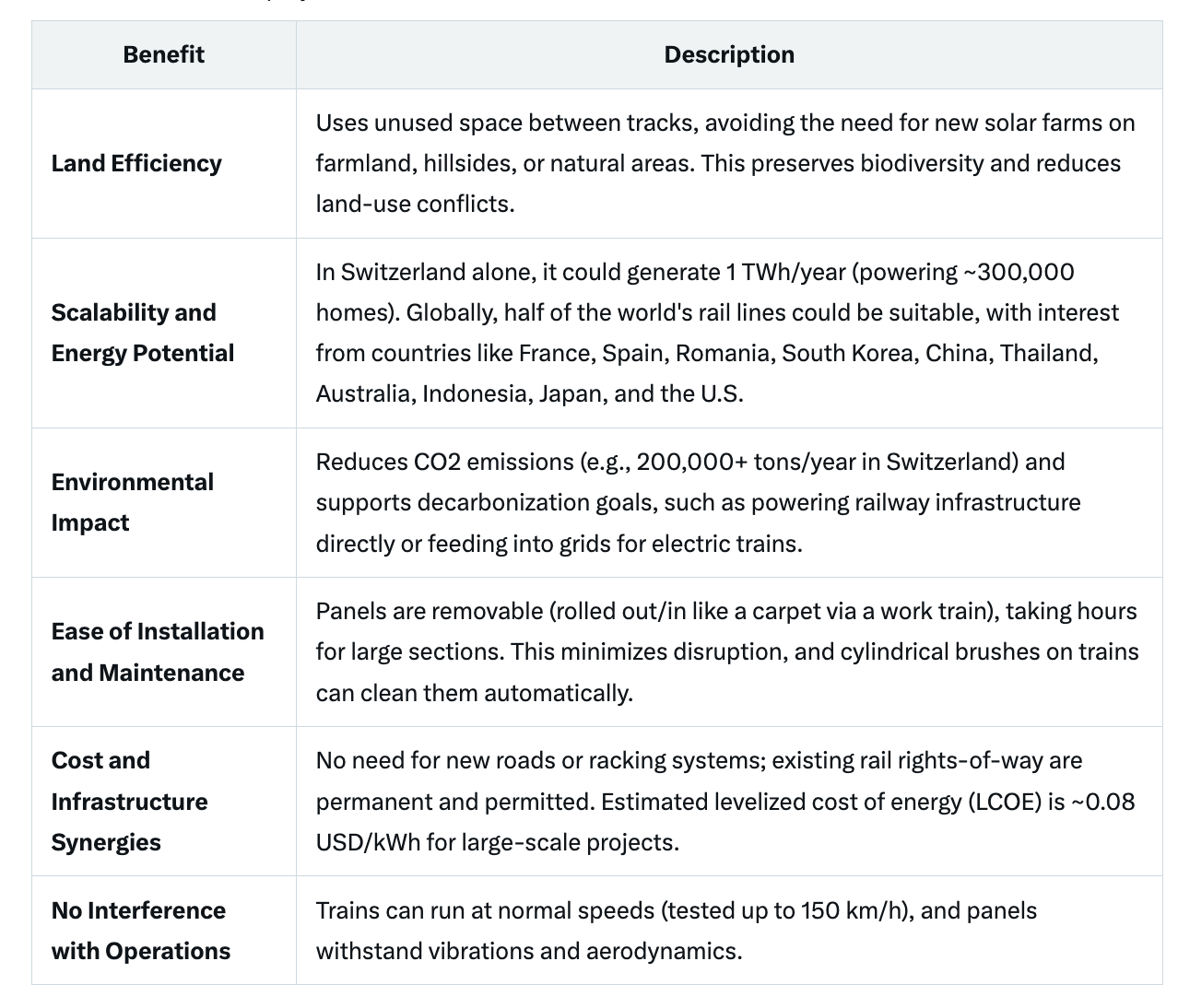Rails to Renewables: Could Swiss Solar Tracks Ease Vermont's Solar Farm Feuds?
In a quiet pilot near Buttes, Switzerland, startup Sun-Ways has installed removable solar panels right between the rails of active train lines.
In Vermont, the push for solar energy has encountered significant NIMBY (Not In My Backyard) resistance. According to reports, this backlash has stalled or sunk numerous solar farm proposals across the state, with residents decrying the loss of scenic views and farmland.
For example, in 2015, residents in eastern Vermont turned out to oppose a proposed solar farm by Green Mountain Power and a solar power firm, citing concerns over its impact on the local landscape.
Similar outcries have occurred in communities from the Champlain Valley to the Northeast Kingdom, where large-scale solar projects on agricultural land have sparked petitions, town hall debates, and even lawsuits. As one commentator noted in a 2021 analysis, such opposition to solar developments can feel like a barrier to addressing climate change, particularly as Vermont aims for 90% of its overall energy needs from renewable sources by 2050, according to the state's Comprehensive Energy Plan.
What if Vermont could harness the sun without touching a single acre of precious farmland or hilltop?
Enter a clever Swiss innovation that's turning heads—and potentially tracks—toward a NIMBY-proof path. In a quiet pilot near Buttes, Switzerland, startup Sun-Ways has installed removable solar panels right between the rails of active train lines. No new land grabs, no disruption to cows or cornfields. Just clean energy squeezed into existing infrastructure.
The tech is straightforward yet has been described as ingenious: Thin, durable solar panels are laid flat between the tracks, designed to withstand train vibrations and be rolled up like a carpet for quick removal during maintenance.
In the Swiss trial, a mere 100-meter stretch with 48 panels generates about 16,000 to 18,000 kilowatt-hours (kWh) annually—enough to power four to six average homes. Scaled up across Switzerland's suitable rail network, it could churn out 1 terawatt-hour (TWh) per year, slashing CO2 emissions by over 200,000 tons and covering roughly 2% of the nation's energy needs.
If It Works In Switzerland . . .
For Vermont, this isn't just alpine fantasy—it's a practical pivot. Vermont has about 578 miles (930 kilometers) of active railroad tracks, much of it owned or managed by entities like the Vermont Rail System, according to state rail plans and VTrans data.
Applying the Swiss pilot's output rate—roughly 170,000 kWh per kilometer per year—Vermont's full network could theoretically produce around 158 gigawatt-hours (GWh) annually. To put that in local terms: That's enough juice for about 22,500 Vermont households, based on an average annual usage of around 7,000 kWh per home, as estimated from state energy profiles.
Or, it could offset nearly 3% of the state's total electricity consumption, which stands at about 5.5 TWh yearly, according to the U.S. Energy Information Administration and state reports.
Of course, not every mile is ideal. Tunnels, heavy tree cover, and steep mountain grades would knock out portions—experts estimate only 50-70% might be viable, trimming the potential to 80-110 GWh. Still, in a state where solar currently supplies about 17% of electricity, according to the Solar Energy Industries Association, this could be a game-changer without igniting the NIMBY fires that have burned projects like the one in eastern Vermont.
Imagine powering Montpelier schools or St. Albans factories via the Lamoille Valley Rail Trail's old lines, all while preserving our working farms and ridgelines. The beauty here is in bypassing the backlash.
Rail-solar ducks those darts: Tracks are already "industrial," tucked away from backyards, and the panels lie low, out of sight from most vantage points. No extra disruption, no habitat loss—just piggybacking on space we've already claimed.
As renewable advocates point out, this could complement, not replace, rooftop or community solar, easing the pressure on contested sites. Yet, as any Vermonter knows, our winters don't play nice. Critics on social media have rightly flagged snow and shade as hurdles, and they're spot-on for our climate. Here's a deeper look at the upsides and pitfalls, drawn from the Swiss project's data and tailored to Vermont realities:
These tables highlight why rail-solar isn't a silver bullet—our nor'easters and forested rails could cut efficiency by 20-30% compared to sunnier climes. But with Vermont's robust solar incentives and a state-owned chunk of those tracks (305 miles), according to state rail documents, a pilot could be feasible.
The Vermont Agency of Transportation, which oversees rail planning, might partner with innovators like Sun-Ways to test it on low-traffic lines. In the end, this Swiss spark could light a way forward for Vermont's energy future—one that honors our NIMBY instincts while advancing the green agenda. It's not the whole solution; we'll still need diverse renewables. But as we grapple with rising floods and heating bills, turning our underused rails into power plants feels like a win-win. Time for Vermont to get on board?




